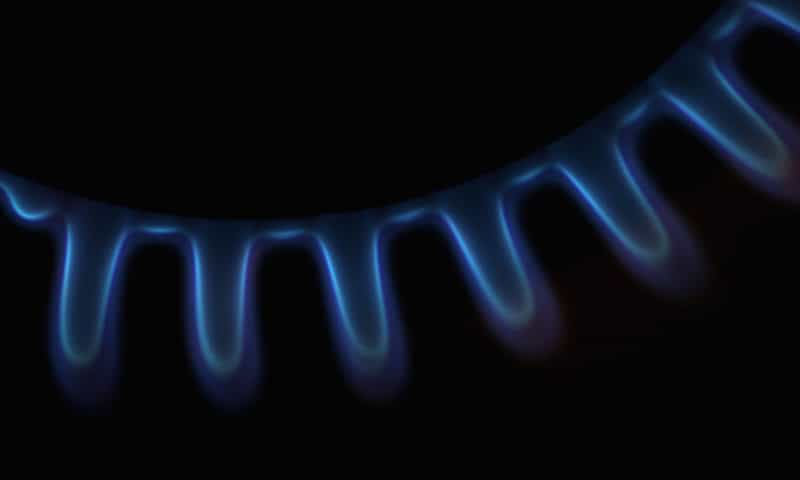Prices for the fuel trade more than 30% higher month to date
Oil prices have declined sharply in November, but natural gas’ rise has been even more striking with prices for the heating fuel having soared by more than 30% for the month to date, recently touching their highest level in more than four years. And further price gains may follow with winter weather just beginning.
“The price will move up and down with the weather, but the upside moves will be greater than the downside,” says James Williams, energy economist at WTRG Economics.
December natural gas NGZ18, +8.72% rose 18% to settle at $4.837 per million British thermal units on Wednesday. That was the highest settlement since Feb. 26, 2014, and the biggest one-day percentage rise in more than 14 years, according to Dow Jones Market Data. Prices fell back by 17% on Thursday, and settled up almost 6% on Friday, for a weekly rise of nearly 15%.
“Years of abundance have finally unwound in the natural-gas market, with low relative inventories for this time of year now confronting cold temperatures and somewhat underwhelming seasonal bullish investor sentiment,” says Rob Haworth, senior investment strategist at U.S. Bank.
That compares with a plunge in oil prices, which dropped nearly 14% month to date as of Friday. December West Texas Intermediate crude CLZ9, +0.50% suffered a record 12 consecutive session declines through Tuesday, when it settled at a nearly one-year low of $55.69 a barrel.
The divergence in oil and gas prices could mean that “some of the players who have been burned in oil have turned to natural gas as a means for trying to recover their losses,” says Colin Cieszynski, chief market strategist at SIA Wealth Management. “Natural gas is a small market,” he adds, so a “large group of new entrants jumping on the bandwagon at once has pushed up the price. The rally may also be taking on a life of its own, and appears to be triggering a short squeeze.”
Natural gas, however, has good reasons of its own to rally. Low inventories coming out of last year, depressed prices of the past several years curtailing exploration-and-production investments, and the arrival of an early winter are all to blame for the spike in natural-gas prices, says Cieszynski.
U.S. natural-gas supplies in storage stood at 3.247 trillion cubic feet for the week ended on Nov. 9, according to the Energy Information Administration. That was about 16% below the five-year average.
“The storage deficit makes gas prices subject to greater-than-normal reaction to colder-than-normal weather,” says Williams. On Thursday, much of the East Coast was hit by an early snowstorm. Among exchange-traded funds, the United States Natural Gas fund UNG, +11.42% was trading around 33% higher month to date.
The market entered the withdrawal season with supplies in storage more than 600 billion cubic feet below normal, says Williams. “The lowest we have had relative to the five-year average in the past 22 years was 266 [billion cubic feet] in 2014.” The withdrawal season, when supplies start to decline as cold weather sets in, typically runs from Nov. 1 through March 31.
Oddly enough, the low level of supplies in storage coincides with U.S. natural-gas production climbing to record levels. The EIA forecasts that dry natural-gas production will average 83.2 billion cubic feet a day this year, up 8.5 billion cubic feet a day from 2017. “Both the level and growth of natural-gas production in 2018 would establish new records,” according to the EIA.
“Record high production will help over the course of the winter, but it is storage that fills the gaps between production and demand,” says Williams.
It’s possible, too, that if the $4 price level is sustained for natural gas, the high price would prompt “some fuel switching” among utilities, bringing some coal-fired plants on-line, he notes.
As for consumers trying to heat their homes this winter, higher prices could show up quickly or gradually. How the natural-gas price increase affects the consumer “depends on their contract,” says Cieszynski. “If they are priced month to month, the impact could come quickly. If customers pay an average price over a year, they may not see any impact until next spring or summer, when their contracts roll over and prices change.”
Adds Cieszynski: “Even then, it depends on how long this higher price environment lasts.”

